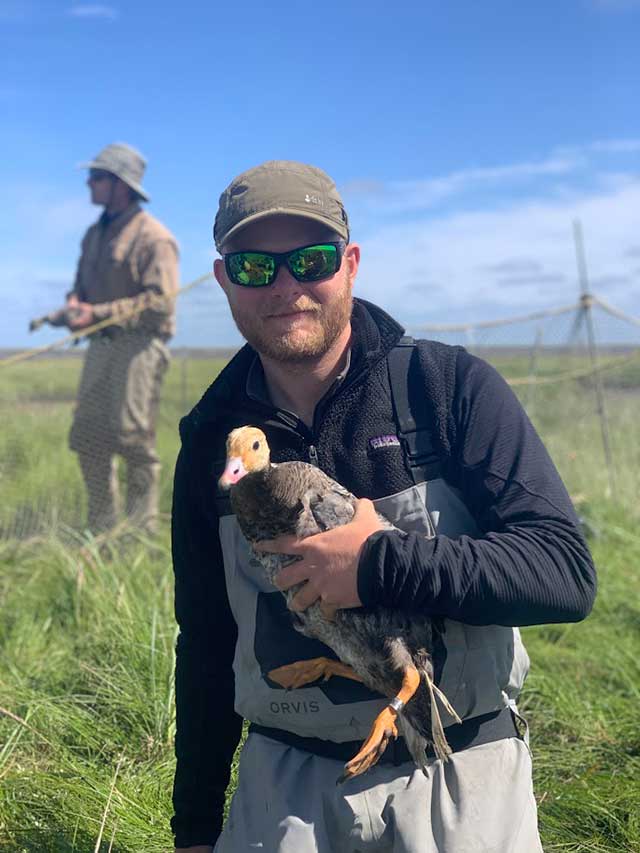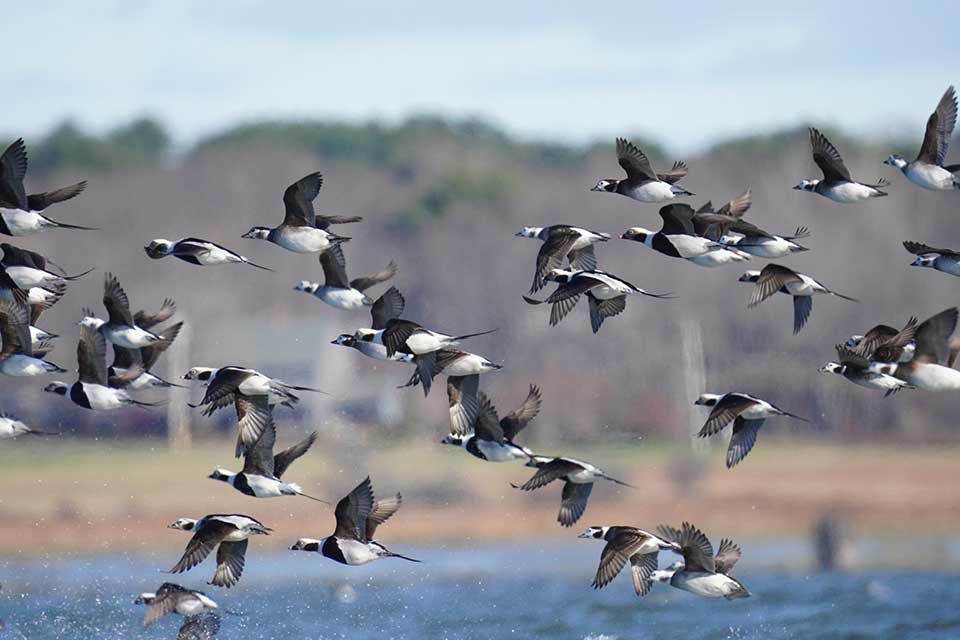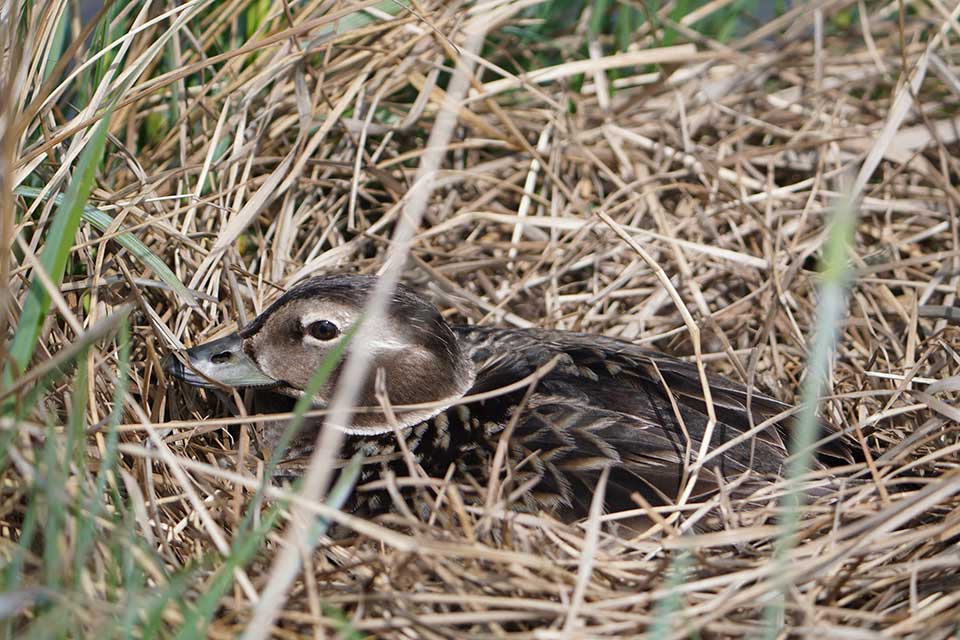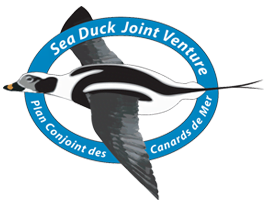
There aren’t many opportunities to work hands-on with sea ducks for undergraduate students, so when Jake Hewitt was offered a chance to spend time studying Long-tailed ducks on Lake Michigan, he jumped on it. That experience set in motion a chain of events leading to where he is now – working with the North Dakota Department of Fish & Game as a waterfowl biologist after graduating with his Master’s degree from the Environmental Science and Ecology program at SUNY-Brockport.
This first experience working with sea ducks came during his undergraduate work at the University of Wisconsin-Stevens Point, where he spent time doing fieldwork on a boat, listening to Long-tailed Duck calls, helping catch them, and learning about sea duck biology. He found himself drawn to them for a variety of reasons; their striking appearance, their diverse and intense life cycles, and the overall mystery surrounding the life history of many sea duck species.
Since graduating with his B.S., he continued studying sea ducks in Montana and Alaska, while also working with a broad range of other avian taxa across all four flyways. The last few years were spent working on his Master’s research focused on Long-tailed Ducks, Black Scoters, White-winged Scoters, and Surf Scoters, studying population demography.

Long-tailed Ducks flying. Photo: Jake Hewitt
Research on these species is particularly valuable because of the remoteness of where many sea duck populations live and breed and because many are understudied. The proportion of juveniles in the population gives scientists an index of recruitment for the overall population. But as you can probably imagine, it’s not easy to count sea ducks or monitor their breeding success, with so many populations spread out across the globe. That’s why for decades, scientists have been using something called the Parts Collection Survey (PCS).
In this survey, hunters from around the U.S. send in wings from waterfowl they hunt, which scientists then use to identify the age, sex, and other information about each species included, eventually informing population size estimates and waterfowl harvest management decisions. Sea ducks are underrepresented in the PCS, causing scientists to question if resulting sea duck estimates are biased. In his research, Jake used direct-count photo surveys to calculate updated estimates of juvenile proportions in the Atlantic Flyway. This took Jake to various places, reaching 11 states over three years where he and other surveyors took photos from shore and boats of the four study species.
Through his work, Jake and his colleagues found that PCS estimates of juvenile proportions were significantly elevated in comparison to photo estimates for all four species, indicating a positive bias in PCS estimates. They also helped establish the reliability of a new survey method, which Jake hopes can be a more cost-effective tool that produces more accurate population size and recruitment rate estimates in the long term. This research will also help waterfowl managers manage the species more responsibly, for the shared benefit of people and the birds.

Long-tailed Duck on the nest. Photo: Jake Hewitt
Additional data from the second portion of his work showed that multiple species were positively associated with mean temperatures at breeding areas in spring, supporting the hypothesis that ice cover pre-nesting and harsher winter conditions post-nesting reduce overall breeding success and juvenile survival. This information can further inform the management and conservation of the study species, especially in light of climate change.
Jake shared that both the support of his research through the SDJV student fellowship and the community and mentorship he found through working with the JV were incredibly important to his graduate research. In the future, he hopes to continue supporting sea duck conservation efforts, supporting the work of the SDJV, and studying avian ecology and sea ducks, but currently, he is enjoying his role as a waterfowl biologist and continuing work with the Straub waterfowl lab at SUNY-Brockport.
Follow along to keep up with Jake, and other SDJV Student Fellowship Awardees, and learn about our 2024 awards!
